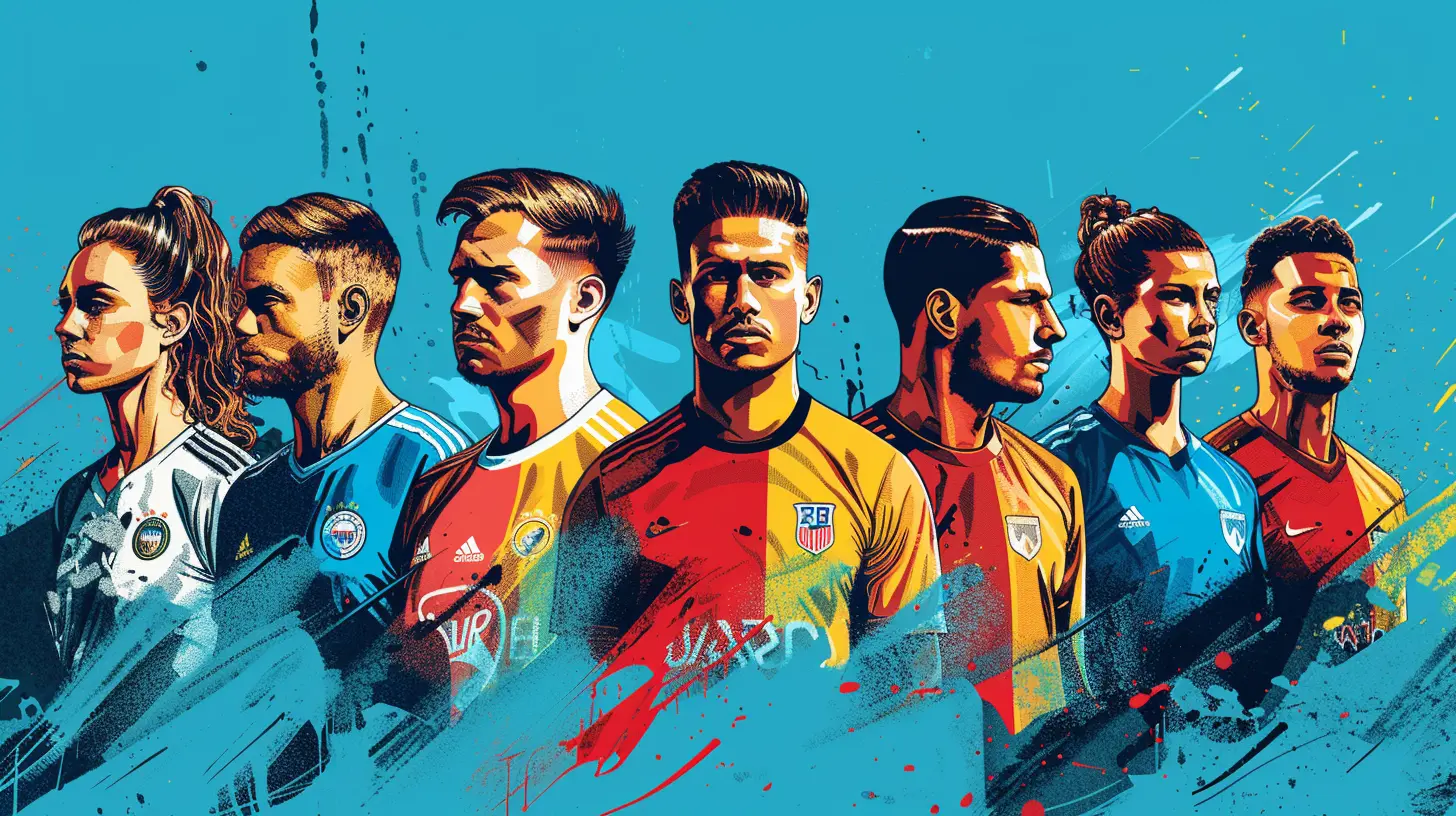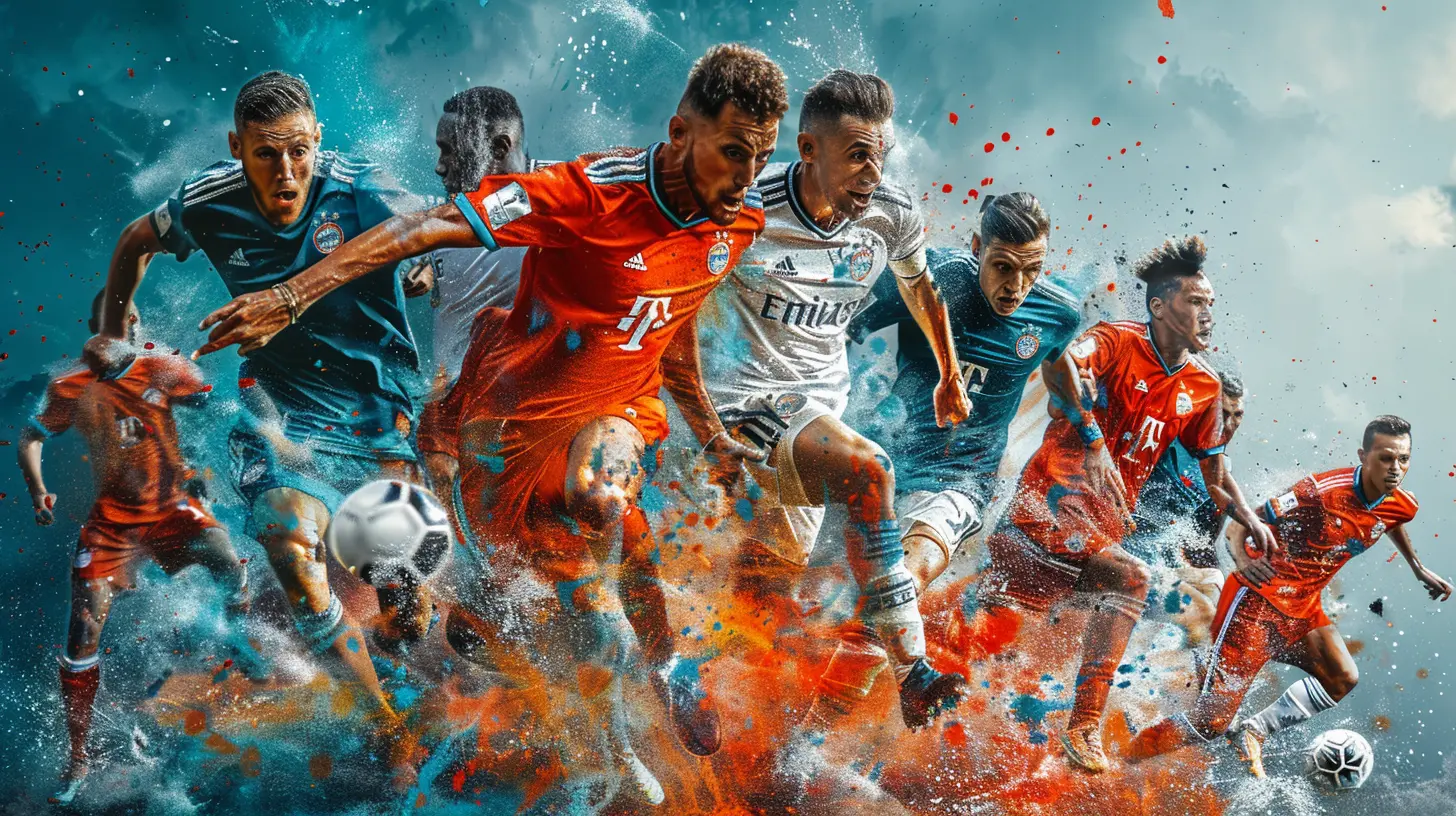How Club Teams Have Revolutionized Sports Marketing
8 August 2025
In the world of sports, success is no longer defined solely by what happens on the field. With the rise of club teams, the sports landscape has transformed into a global marketplace where branding, engagement, and marketing are driving forces behind the success of clubs. From football (soccer) to basketball and beyond, club teams have revolutionized sports marketing, turning loyal fans into global audiences and leveraging technology to create unparalleled brand value.
But how exactly have club teams turned the game upside down when it comes to marketing? Well, that's what we're here to explore. Get ready to dive into the fascinating world of sports marketing and see how your favorite clubs have become more than just teams—they’ve become global brands.

The Evolution of Club Teams in Sports Marketing

The Traditional Approach: Before the Revolution
Think back to the old days of sports—televised games, local sponsorships, and newspaper ads. That was the extent of sports marketing, right? Club teams relied on local fan bases, ticket sales, and occasional merchandise to generate revenue. Marketing efforts were fairly localized, with clubs focusing mostly on their immediate surroundings, and international attention was rare.While fans were passionate, their access to the team was limited to game day experiences and the occasional radio or TV interview. The idea of a "global brand" was almost nonexistent. Most marketing efforts were reactive rather than proactive.

The Digital Age: The Shift Begins
Everything started to change with the advent of the internet and social media. Suddenly, clubs weren’t just local entities—they had the potential to reach a global audience at the click of a button. And that’s exactly what they did.Clubs began to realize that their fans weren’t just confined to the city or country they represented. Through platforms like Facebook, Twitter, and Instagram, fans from all over the world could follow the team, engage with content, and feel like a part of the community, even if they were thousands of miles away. This was the beginning of a new era in sports marketing.
The Rise of Social Media and Digital Content
Social media has played an enormous role in shaping how club teams market themselves. Instagram posts, tweets, YouTube highlights, TikTok challenges—these platforms have allowed clubs to build massive online communities. And it's not just about posting game highlights. Clubs now engage fans with behind-the-scenes content, player interviews, memes, and even collaborations with influencers.Take a look at football clubs like FC Barcelona or Manchester United. Beyond their on-field success, their social media presence is enormous. Millions of followers across the world get daily updates, exclusive content, and interactive experiences, all of which keep them connected to the club no matter where they are.
It’s no longer just about selling tickets to games; it’s about selling an experience, a lifestyle, and a connection to the team. The club is with the fan 24/7, whether they're watching a live stream, sharing a meme, or engaging in a discussion on Twitter.
Global Branding: Expanding Beyond Local Markets
One of the most significant changes club teams have made in recent years is transforming themselves into global brands. Think of clubs like Real Madrid or NBA teams like the Los Angeles Lakers. These are no longer just sports teams—they’re massive global businesses.Clubs have realized they can tap into markets far beyond the borders of their home countries. This has led to the opening of international offices, partnerships with foreign companies, and even hosting games in foreign countries. For example, the NBA hosts regular-season games in cities like London and Mexico City, while European football teams have extensive pre-season tours in Asia and the United States.
These efforts are not just about expanding the fan base, but also about creating new revenue streams through merchandise sales, sponsorships, and licensing deals in new markets.
Sponsorships and Partnerships: A New Level of Revenue
Speaking of sponsorships—this is where club teams are really cashing in. In the modern era of sports marketing, big brands want to be associated with successful and popular teams. And club teams are more than happy to oblige.Sponsorship deals have skyrocketed in value, and it’s not just about slapping a logo on a jersey anymore. Brands are partnering with clubs to create meaningful campaigns that resonate with fans. Whether it’s a special edition jersey, a co-branded digital experience, or even a limited-time product, these partnerships allow both brands and clubs to reach new audiences.
Consider Manchester City’s partnership with Puma, or FC Barcelona’s deal with Spotify. These aren’t just about team kits or logos on the stadium walls; they’re about integrating the brand into the culture of the club. This means engaging with fans in creative ways, offering exclusive content, and providing new experiences both on and off the pitch.
Fan Engagement: Creating a Two-Way Street
Here’s where things get really interesting. Club teams have managed to turn their fans from mere spectators into active participants. Through social media, apps, and fan forums, clubs are now in constant communication with their supporters.This engagement goes beyond just liking a post or retweeting a game highlight. Clubs are involving fans in decision-making processes, such as voting for the design of next season’s kit or choosing the player of the match. Some clubs, like Borussia Dortmund, even involve fans in strategic decisions through fan-owned shares in the club.
This two-way engagement creates a deeper connection between the club and its fans, making fans feel like they have a real stake in the team’s success. This sense of ownership and belonging is something that can’t be bought—it’s earned through consistent and meaningful interaction.
The Role of Data and Analytics in Sports Marketing
In today’s world, data is king—and club teams know it. They’re using data and analytics to better understand their fan bases, track engagement, and predict future trends.For example, clubs can analyze social media interactions to see what type of content resonates best with their audience. They can track which posts get the most engagement, which videos are watched the longest, and even use sentiment analysis to gauge fan mood after a match.
This data-driven approach allows clubs to tailor their marketing efforts in real-time. If they see a spike in engagement around certain players or events, they can quickly pivot to capitalize on that momentum. It’s a level of precision that was unimaginable in the days of traditional marketing.
Moreover, data is also used in partnerships and sponsorship deals. Brands want to know that their investment in a club will pay off, and clubs can provide detailed analytics to show how their marketing efforts are impacting fan engagement and brand awareness.
The Power of Storytelling: More Than Just a Game
One of the most powerful tools club teams have at their disposal is storytelling. Fans don’t just support a team because they win games—they do it because they are part of a narrative. Whether it’s the underdog story, the comeback from adversity, or the quest for a long-awaited championship, fans are emotionally invested in these stories.Clubs like Liverpool FC have mastered the art of storytelling. Their "You'll Never Walk Alone" anthem isn’t just a song—it’s a key part of the club’s identity and narrative. This sense of history, tradition, and emotion is something that club teams have harnessed to build a deeper connection with their fans.
Clubs use content to tell these stories in a variety of ways—through video documentaries, social media campaigns, and even interactive experiences on their apps. These stories aren’t just about the players on the field, but about the fans, the community, and the shared experiences that make supporting a club so special.
Esports and Virtual Engagement: A New Frontier
As technology continues to evolve, so too do the opportunities for club teams to engage with fans. One of the most exciting new developments in sports marketing is the rise of esports and virtual engagement.Clubs are entering the world of esports, creating their own teams and competing in digital versions of their respective sports. For example, many football clubs, such as Paris Saint-Germain and AS Roma, have official esports teams that compete in FIFA tournaments. This allows clubs to engage with a younger, tech-savvy audience that may not be as interested in traditional sports.
Additionally, virtual reality (VR) and augmented reality (AR) are opening up new ways for fans to experience the game. Imagine putting on a VR headset and feeling like you're sitting in the front row of a live match, or using AR to bring your favorite players into your living room.
These technologies are still in their infancy, but the potential for fan engagement is enormous. Club teams are always looking for new ways to connect with fans, and esports and virtual engagement represent a new frontier in sports marketing.

Conclusion: The Future of Sports Marketing
The way club teams market themselves has changed dramatically in the past decade, and there’s no sign of it slowing down. From social media engagement to data-driven strategies, from global branding to virtual experiences, club teams have turned sports marketing into an art form.What started as a way to sell tickets and merchandise has evolved into a 24/7 global business, where the club is more than just a team—it’s a lifestyle, a community, and a brand. And as technology continues to evolve, the possibilities for fan engagement and marketing innovation are endless.
So, the next time you wear your favorite club’s jersey or engage with their content on social media, remember—you’re not just supporting a team. You’re part of a global marketing revolution.
all images in this post were generated using AI tools
Category:
Club TeamsAuthor:

Umberto Flores
Discussion
rate this article
1 comments
Garrett McIntire
Club teams are not just players; they’re brands. Their innovative marketing strategies inspire passion, unite communities, and redefine the future of sports engagement!
September 12, 2025 at 2:36 AM

Umberto Flores
Absolutely! Club teams have transformed into powerful brands, leveraging innovative marketing to foster community, ignite passion, and reshape sports engagement for the future.


